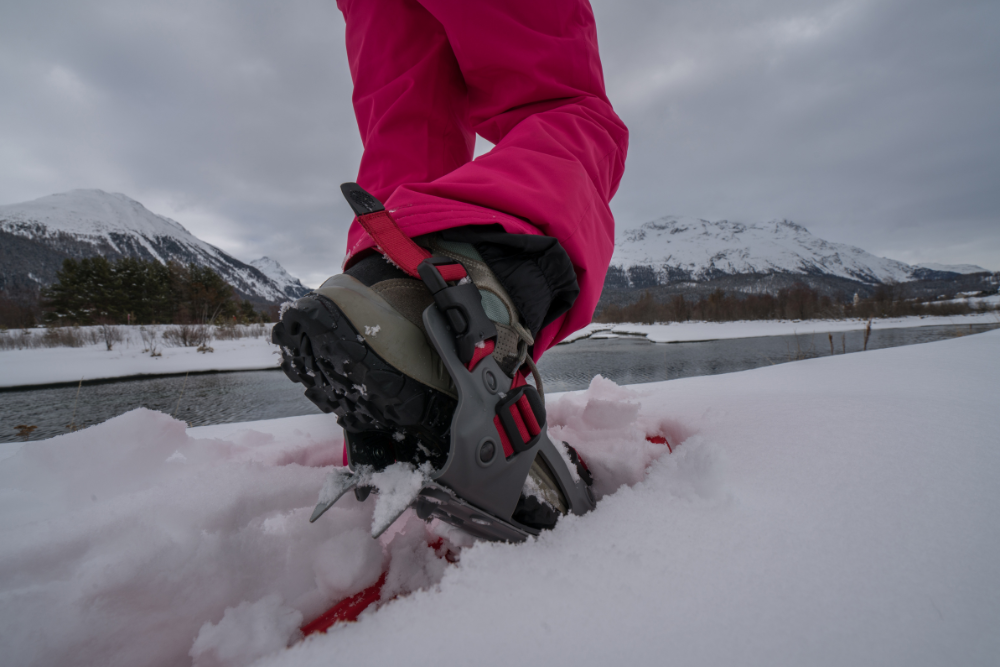Switzerland, with its breathtaking Alpine landscapes, is a winter paradise for outdoor enthusiasts, and snowshoeing is one of the best ways to explore the snowy wilderness. Unlike skiing or snowboarding, snowshoeing offers a peaceful and accessible way to discover Switzerland’s hidden gems while surrounded by the stillness of snow-covered mountains, frozen lakes, and pristine forests. Whether you’re an experienced hiker or a beginner, snowshoeing offers a unique experience in Switzerland’s winter wonderland. Here’s your guide to snowshoeing in Switzerland.
1. Where to Go Snowshoeing in Switzerland
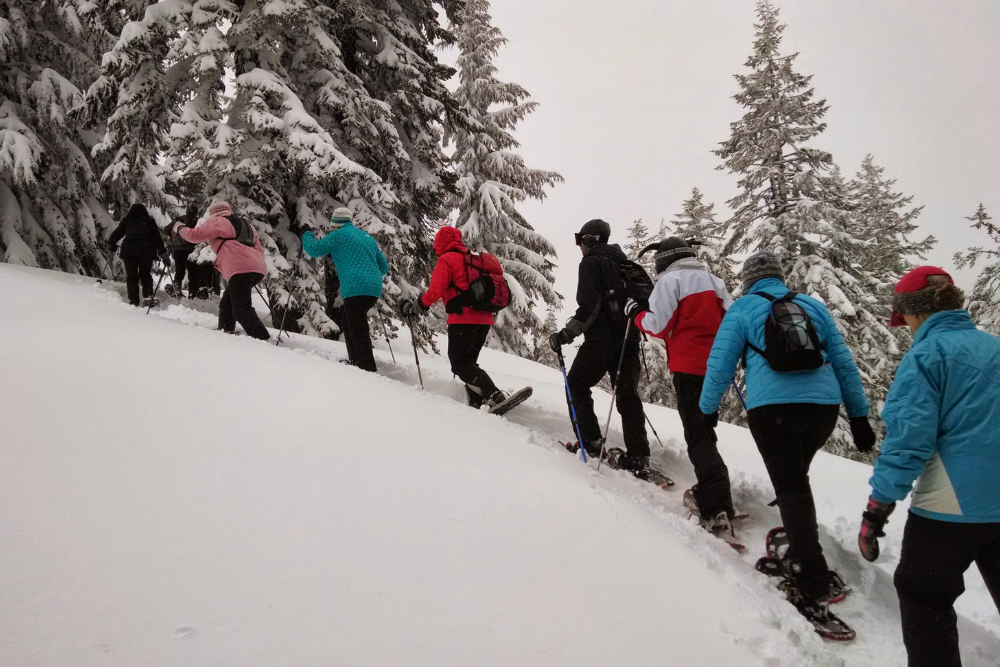
Switzerland’s diverse landscape offers a variety of snowshoeing routes, from easy-going paths to more challenging mountain treks. Some regions are particularly well-known for their exceptional snowshoeing trails.
- Engadine Valley: Located in eastern Switzerland, the Engadine Valley is a snowshoeing haven. The valley is known for its charming villages, stunning landscapes, and serene routes. One of the most popular snowshoeing destinations here is St. Moritz, where you can explore trails that lead through forests, across frozen lakes, and up to the mountains. The Corvatsch area offers panoramic views and peaceful trails through untouched snow.
- Grindelwald: In the heart of the Bernese Oberland, Grindelwald is surrounded by snow-capped peaks and lush valleys. The First and Faulhorn trails are among the most popular snowshoeing routes. Grindelwald is also home to the famous Eiger, Mönch, and Jungfrau mountains, which provide the backdrop to unforgettable snowshoe adventures.
- Zermatt and the Matterhorn: The iconic Matterhorn mountain offers some of the most stunning views for snowshoeing. From Zermatt, you can follow trails that lead through forests, along glaciers, and to viewpoints with spectacular views of the surrounding peaks. The Gornergrat is a must-see, with its panoramic views of the Matterhorn and the nearby glaciers.
- Jura Mountains: For those looking for more tranquil, lesser-known routes, the Jura Mountains offer a perfect escape. The trails here are generally gentler, passing through snow-covered forests, quiet villages, and picturesque valleys. The Creux du Van is one of the most iconic locations in the Jura, with impressive cliffs and snowy ridgelines.
- Valais: Another stunning region for snowshoeing is the Valais canton. From Saas Fee to Zinal, the area offers a wealth of snowshoeing trails with varying levels of difficulty. The Aletsch Glacier is another prime location for snowshoeing, where you can explore the world’s largest glacier on a guided snowshoe tour.
2. What to Expect on a Snowshoeing Adventure
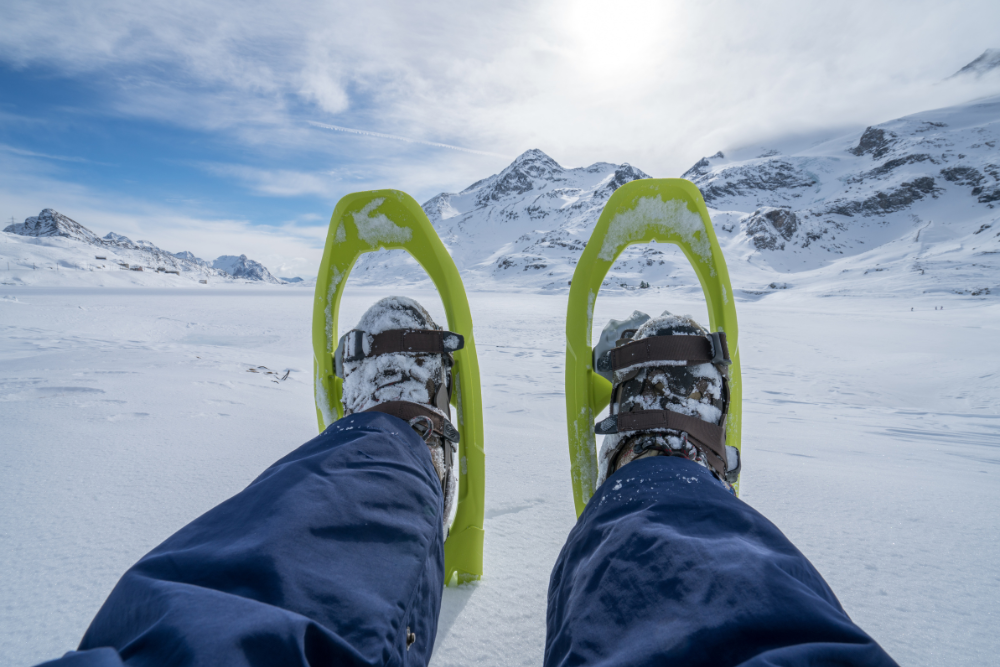
Snowshoeing allows you to explore Switzerland’s winter landscapes at your own pace. Unlike skiing or snowboarding, which require specialized skills, snowshoeing is easy to pick up, even for beginners. However, there are some key things to expect when you embark on your snowshoeing adventure:
- Scenic Trails: Expect to walk through tranquil forests, across open alpine meadows, and along the shores of frozen lakes. The landscapes vary from one region to another, but all offer spectacular views of snowy mountains and valleys.
- Quiet and Peaceful: One of the main appeals of snowshoeing is the serenity of the experience. While skiing and snowboarding can be fast-paced and crowded, snowshoeing takes you off the beaten path and into the quiet wilderness. You’ll hear the crunch of snow beneath your feet, the soft whisper of the wind, and perhaps the distant call of birds, creating a peaceful and immersive winter experience.
- Snow Conditions: Snowshoeing is often done in deep, powdery snow, making it the perfect activity for Switzerland’s winter conditions. Trails are typically well-maintained, and the snow can vary from light powder in the Alps to harder, packed snow in lower-lying areas.
- Fitness Levels: Snowshoeing is a low-impact activity that provides a good workout while being gentle on the joints. Depending on the terrain, snowshoeing can be an easy stroll or a more challenging workout. Most routes offer gentle paths, but there are also more demanding hikes for experienced snowshoers.
3. How to Prepare for a Snowshoeing Trip
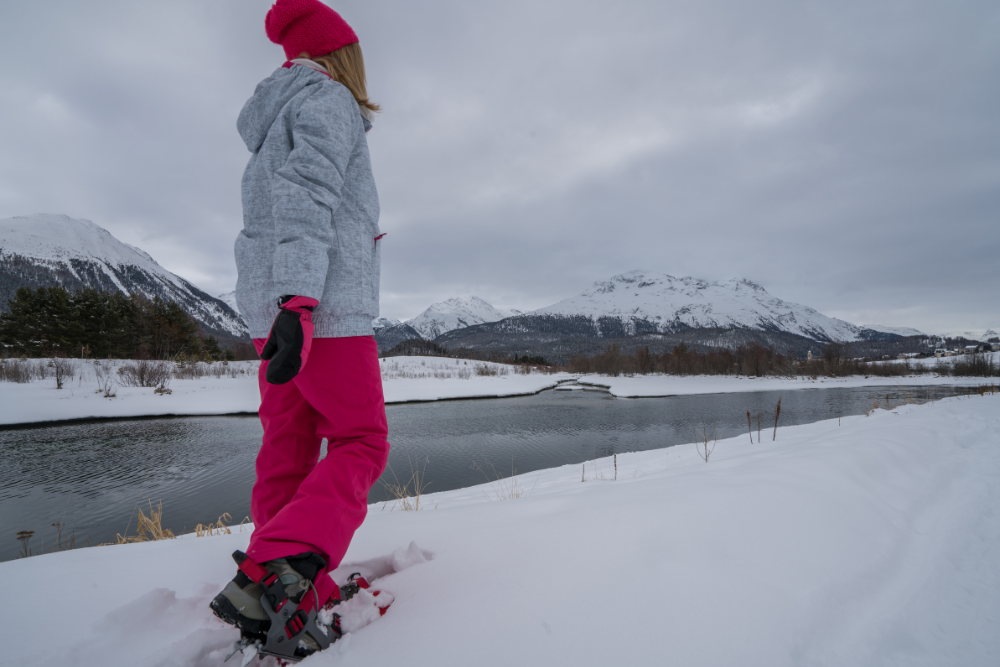
While snowshoeing is beginner-friendly, preparation is still important to ensure a safe and enjoyable experience. Here are some tips on how to prepare for your snowshoeing adventure in Switzerland:
- Dress in Layers: The weather in the Swiss Alps can be unpredictable. Layering your clothing is key to staying comfortable, as you can adjust your layers based on the temperature and exertion level. Make sure to wear moisture-wicking base layers, an insulating mid-layer, and a waterproof outer layer.
- Footwear and Equipment: Proper footwear is essential for snowshoeing. Sturdy waterproof boots are recommended to keep your feet dry and comfortable in the snow. Snowshoes are usually available for rent at ski resorts or local shops, but make sure they are well-fitted and suited to the terrain. Poles are optional but can help with balance and stability.
- Guided Tours vs. Self-Guided: While it’s possible to snowshoe on your own, especially on well-marked trails, many travelers prefer to join guided tours. Guided tours offer local expertise, ensuring safety and providing insight into the region’s wildlife, history, and culture. Tour operators can also help you navigate more challenging trails.
- Safety First: Always check the weather forecast before heading out, and make sure the trails are open and safe. In remote areas, avalanche risk may be present, so it’s important to have proper avalanche training or join a guided tour with experts who know the terrain. Carry a map, a compass, and a first aid kit, and let someone know your route and expected return time.
4. Best Time to Go Snowshoeing
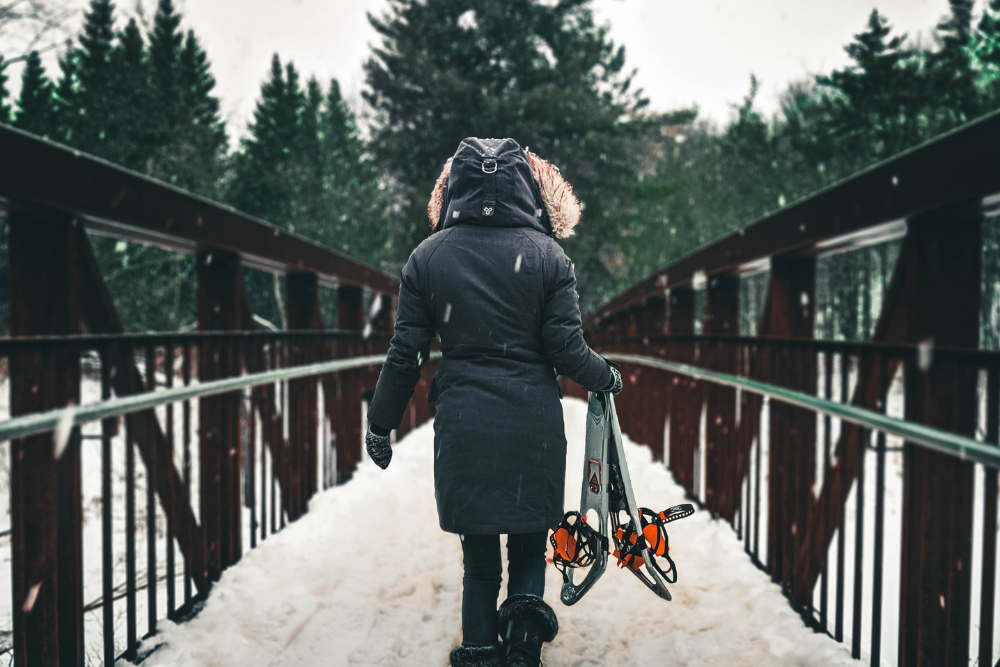
The best time to go snowshoeing in Switzerland is between December and March, when the snow conditions are at their best. The holiday period around Christmas and New Year is popular, but also busier, so early or late season (early December or March) might offer more peaceful trails and better availability for accommodations.
5. Where to Stay During Your Snowshoeing Adventure
Switzerland offers a range of accommodation options for snowshoers, from cozy mountain huts to luxurious resorts. If you’re planning to snowshoe in one of Switzerland’s popular areas, you’ll find a variety of places to stay.
- Mountain Huts: For a truly authentic experience, consider staying in a traditional Swiss mountain hut. These often offer basic but comfortable accommodations and hearty Swiss meals, providing the perfect base for a snowshoeing adventure. Many are located near popular snowshoeing routes.
- Ski Resorts: Many ski resorts, such as Zermatt and St. Moritz, also cater to snowshoers. These resorts offer a mix of luxury and rustic accommodations, with easy access to both ski slopes and snowshoeing trails.
- Swiss Hotels: For those who prefer a more luxurious experience, Switzerland boasts many upscale hotels with wellness centers, spas, and spectacular views of the Alps. Staying in towns like Lugano or Grindelwald offers access to both snowshoeing and après-ski activities.
Conclusion
Snowshoeing in Switzerland is the perfect way to experience the country’s magical winter landscapes. Whether you prefer a serene walk through snow-covered forests, a more challenging climb up mountain trails, or a relaxing exploration of Swiss villages, snowshoeing offers something for everyone. With well-maintained routes, stunning views, and a peaceful atmosphere, Switzerland’s snowshoeing trails will leave you with lasting memories of a winter wonderland.



